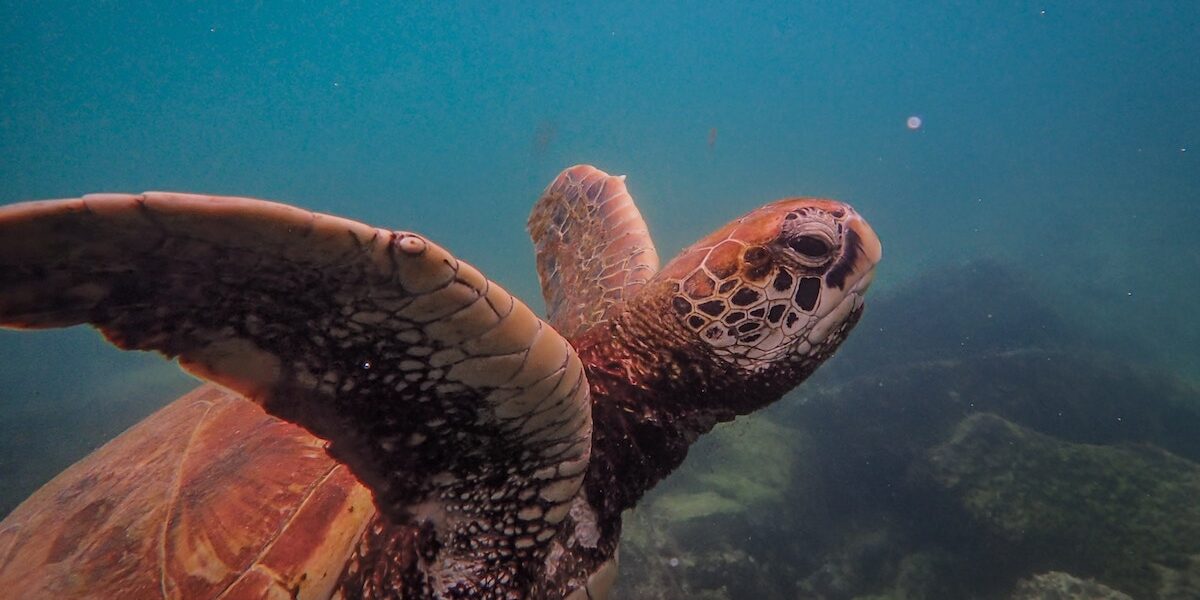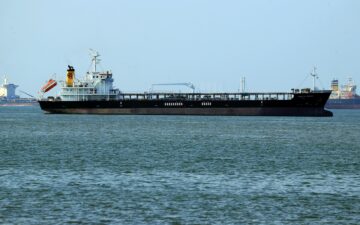By Brad Nahill, Co-founder and Director of SEEtheWild.org
“We may have to walk a ways to see a sea turtle,” I told my daughter Karina as we stood on X’cacel beach, one of Mexico’s most important turtle nesting beaches, located near Playa del Carmen on the Yucatan Peninsula.
As luck would have it, we only needed to walk 20 feet before a round shape appeared in the surf. The green turtle emerged directly in front the research station run by Flora, Fauna y Cultura de Mexico, a local sea turtle organization and partner of SEE Turtles. To give the turtle the space she needed to dig, we moved up the path, only to have the turtle follow us. Eventually though, she changed her mind and returned to the water without nesting.
We didn’t have to wait long before other turtles came out of the water. We waited until the nearest turtle was laying its eggs to avoid disturbing it at a critical point in the ancient process. This was another green turtle, weighing about 200 pounds. Though I’ve worked on sea turtle conservation for more than ten years, this was the first turtle my daughter had seen nesting, and she was entranced by the ritual.
X’cacel is located at the end of a dirt road with no signs to promote this oasis of nature, which in tourist-friendly Mexico may be a good thing. Turtles nest along the entire stretch from Cancun to Tulum but this is one of the few places where the beach is free of large resorts. Lights, beach chairs, and crowds all reduce the number of turtles that come up to nest, so natural stretches like this are very important in keeping these charismatic reptiles coming back.
Flora, Fauna y Cultura has spent the 30 years protecting the three species of sea turtles that nest on 11 beaches in the area. These turtles face many threats including consumption of their eggs and meat and here – perhaps more than anywhere else in the world – large scale coastal tourism development. Despite being a national park (known as Santuario de la Tortuga Marina Xcacel-Xcacelito), Xcacel continues to face the threat of having its pristine beach being developed into big resorts.
We headed the next morning to nearby Akumal (Mayan for “Place of the Turtles”), which has a bay known for its foraging green turtles. We arrived early to beat the crowds and put on our snorkels and headed out in search of the turtles. Before long, my wife found a turtle grazing on the grass and we watched it at a distance. Its beautiful orange, brown, and gold shell was much more clear than the one we’d seen the night before.
We had a monopoly on the young green turtle for about 15 minutes before other snorkelers moved in. The turtle moved slowly along the seagrass, occasionally floating to the surface to fill its lungs before sinking to the bottom again. Most of the snorkelers gave the animal sufficient space, though one person eventually drove the turtle away by getting too close and trying to follow it with a camera. Exhilarated by the experience, my daughter said later that watching that turtle in its natural habitat gave her hope for the future of this species.
By the time we were done, dozens more people were getting into the water. After we got out, we had a chance to chat with Paul Sanchez-Navarro, the tall scholarly director of Centro Ecologico Akumal, a group that protects turtles both in the water and nesting nearby. He explained that the large numbers of snorkelers in the bay have a major impact on the turtles that feed on the seagrass, causing them to eat less and increasing stress. The good news is that a new management plan will be in place soon to enforce how visitors and tour guides act while around the turtles.
That evening, we headed south to Tulum. Everything slowed down as we turned off the main highway and drove our rental car over the frequent speed bumps along the road towards Sian Ka’an Biosphere Reserve. At Hotel Nueva Vida de Ramiro, a local hotel that works to minimize its ecological footprint while creating an inviting setting, most of the grounds are planted with native trees. The small resort hosts rangers from Flora, Fauna y Cultura and a hatchery to protect the eggs laid by turtles that come up this stretch of beach.
That evening, the turtle rangers knocked on our door to let us know that one was nesting in front of the hotel, one of the few that turns off its lights at night during nesting season and move furniture from the beach. Such common-sense measures are a necessity when sharing a beach with sea turtles, but unfortunately, the majority of the resorts along this coast don’t take these steps.
This turtle, also a green, headed towards the resort’s hatchery but changed its mind and returned to the ocean without nesting. Fortunately another turtle emerged a short walk distance the beach, so we were able to see the whole nesting process from digging the nest and laying the eggs to hiding it from predators. My wife, also a turtle biologist, helped the ranger work the turtle while I explained the nesting process to a couple of people who approached while walking the beach.
On the way back, we saw a fresh set of turtle tracks that led to a beach chair in front of a brightly lit resort. It was clear from the tracks that the turtle had turned around without nesting once it met the chair– more evidence that resorts like this have replaced poaching on this beach as the biggest local threat. Learn more about how coastal development affects sea turtles.
Our tour of the area’s turtle beaches finished up with a meeting with our friends at Flora, Fauna y Cultura and a group of Mayan youth who patrol a nesting beach nearby in Tulum National Park, near the famous ruins. This beach is a hotspot for egg poaching since there are few people who live along the water. Our Billion Baby Turtles program is helping to fund this program, which provides employment for these young men while helping to protect an important nesting beach.
During our visit, we walked with the turtle protectors to the beach. While my daughter buried her feet in the sand, the young men told us about the hard work done to keep this beach safe for turtles. They spend the entire night on the beach, walking its length search of green and hawskbill turtles. At dawn, they are picked up and return home to rest and recover. This kind of dedication is what is needed to keep the turtle returning to these beaches for many years to come.
Brad is the co-founder and director of SEEtheWILD.org, the world’s first non-profit conservation travel website. He has worked in sea turtle conservation, ecotourism, and environmental education for 15 years with organizations including Ocean Conservancy, Rare, Asociacion ANAI (Costa Rica), and the Academy of Natural Sciences (Philadelphia). He has also consulted for several ecotourism companies and non-profits, including EcoTeach and Costa Rican Adventures. He has authored several book chapters, blogs, and abstracts on turtle conservation and ecotourism and has presented at major travel conferences and sea turtle symposia. Brad has a BS in Environmental Economics from Penn State University and teaches a class on ecotourism at Mount Hood Community College.






